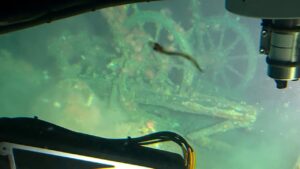Scientists have discovered almost 20,000 new seamounts in the deep sea. Seamounts are underwater mountains, just like mountains on land. They form through the movement of tectonic plates and volcanic activity.
Only about a quarter of the seafloor has been mapped. Usually this is done by ships using sonar, but this is an incredibly time-consuming task. Instead, a research team from the Scripps Institution of Oceanography, Chungnam National University, and the University of Hawaii used satellite data.
The satellite images do not show the actual seamounts but they can measure the height of the sea surface. Around the seamounts, the height changes slightly. The rock formations are denser than the water that surrounds them and they marginally affect the Earth’s gravitational field.
In total, they discovered 19,325 seamounts. This almost doubles the total number of known seamounts. We now have registered 43,454 of them. Most were quite small, between 700 meters and 2,500 meters high, but the smallest was just 421 meters tall. Researchers were shocked that they were able to detect it with satellite data.
In a paper published earlier this year, the researchers expressed hope that increased mapping will provide insights into plate tectonics, ocean geology, and the potential rare minerals found around the mounts.

Seamounts mapped using satellite data (left) and sonar (right). Photo: Gevorgian et al.
Stirring rods in the ocean
Seamounts are normally hotspots for marine life and biodiversity. They create upwellings of nutrients, affect the flow of ocean currents, and their walls create a variety of habitats. Geophysicist David Sandwell told Science News that “they are like stirring rods in the ocean.”
Aside from this, their impact on currents is of particular interest. The seamounts push cold water from the deep ocean upwards. Currents affect the temperature of the water and the movement of nutrients. As oceans are now absorbing more heat and carbon dioxide due to climate change, finding out how the water moves could be of great importance. Knowing where the seamounts are will help oceanographers accurately map the movement of water.
The team wants to continue their work and map more regions of the seafloor. The biggest challenge is how to detect the smallest ones. As they are smaller, they have less impact on the gravitational field. The change in sea surface altitude is harder to pick up and is more easily hidden by ocean currents.
An additional benefit of mapping the seamounts is to help with the navigation of submarines. Seamounts can rise up to 10 kilometers off the ocean floor and unmapped ones can pose a risk to the underwater vessels and those on board. In the past, two U.S. Navy submarines have collided with them.






